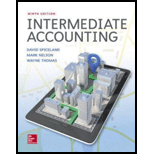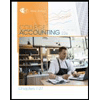
(1)
Depreciation refers to the reduction in the monetary value of a fixed asset due to its wear and tear or obsolescence. It is a method of distributing the cost of the fixed assets over its estimated useful life. The following is the formula to calculate the depreciation.
To calculate: The depreciation for 2018 and 2019 using
(1)
Explanation of Solution
Corporation A purchased machinery for $115,000. The estimated service life of the machinery is 10 years and the estimated residual value is $5,000.
Calculate depreciation using straight line method
Straight line method:
Under the straight-line method of depreciation, the same amount of depreciation is allocated every year over the estimated useful life of an asset.
Hence, depreciation for 2018 and 2019 is $11,000.
(2)
To calculate: The depreciation for 2018 and 2019 using Sum-of-the-years’-digits method.
(2)
Explanation of Solution
Corporation A purchased machinery for $115,000. The estimated service life of the machinery is 10 years and the estimated residual value is $5,000.
Sum-of- the-years’ digits (SYD) method:
Sum-of-the years’ digits method determines the depreciation expense by multiplying the depreciable base and declining fraction.
Where n is estimated life time of the asset.
Calculate depreciation for 2018 and 2019 using Sum-of-the-years’-digits method.
For 2018:
For 2019:
Hence, a depreciation expense for 2018 is $20,000 and for 2019 is $18,000.
(3)
To calculate: The depreciation expenses for 2018 and 2019 using double declining balance method.
(3)
Explanation of Solution
Corporation A purchased machinery for $115,000. The estimated service life of the machinery is 10 years and the estimated residual value is $5,000.
Double declining balance (DDB) method:
In this method of depreciation, the depreciation is calculated by multiply beginning of year book value, not depreciable base, by an annual rate that is a multiple of the straight line rate.
Calculate depreciation expense for 2018 and 2019
For 2018:
For 2019:
Hence, a depreciation expense for 2018 is $23,000 and for 2019 is $18,400.
(4)
To calculate: The depreciation expense for 2018 and 2019 using One hundred fifty percent declining balance.
(4)
Explanation of Solution
Corporation A purchased machinery for $115,000. The estimated service life of the machinery is 10 years and the estimated residual value is $5,000.
One hundred fifty percent declining balance:
In this method of depreciation, the depreciation is calculated by multiply beginning of year book value, not depreciable base, by an annual rate that is a 150% or 1.5 of the straight line rate.
Calculate depreciation for 2018 and 2019.
For 2018:
For 2019:
Hence, a depreciation expense for 2018 is $17,250 and for 2019 is $14,663.
(5)
To calculate: The depreciation expense for 2018 and 2019 using
(5)
Explanation of Solution
Corporation A purchased machinery for $115,000. The estimated service life of the machinery is 10 years and the estimated residual value is $5,000. The machine is expected to produce 220,000 units during its life. During 2018, units produced were 10,000 and during 2019, units produced were 25,000.
Units of production method:
The units’ of-production method is an activity-based method that calculates a depletion or depreciation or amortization rate per measure of activity and then multiplies this rate by actual activity to determine periodic cost allocation.
Calculate depreciation expense for 2018 and 2019:
For 2018:
For 2019:
Hence, a depreciation expense for 2018 is $5,000 and for 2019 is $12,500.
Want to see more full solutions like this?
Chapter 11 Solutions
Intermediate Accounting
- Accounting question best solutionarrow_forwardPlease given correct answer for General accounting question I need step by step explanationarrow_forwardFernando Traders has a balance date of 31 December. On 1 January 2XX3, it had an opening inventory balance of $15,000. During the year, Fernando Traders purchased $30,000 worth of goods for resale. On 31 December 2XX3, the closing inventory balance was $13,000. Sales for the year totaled $50,000. What is the Cost of Goods Sold for Fernando Traders for the period ending 31 December 2XX3?arrow_forward
- Get correct answer with accounting questionarrow_forwardPlease provide correct answerarrow_forwardFelix Mounts has a cost formula for its supplies cost of $1,450 per month plus $22 per mount. For the month of March, the company planned for activity of 530 mounts, but the actual level of activity was 520 mounts. The actual supplies cost for the month was $12,000. The variance for supplies cost in March would be _.arrow_forward
 College Accounting, Chapters 1-27 (New in Account...AccountingISBN:9781305666160Author:James A. Heintz, Robert W. ParryPublisher:Cengage Learning
College Accounting, Chapters 1-27 (New in Account...AccountingISBN:9781305666160Author:James A. Heintz, Robert W. ParryPublisher:Cengage Learning Financial Accounting: The Impact on Decision Make...AccountingISBN:9781305654174Author:Gary A. Porter, Curtis L. NortonPublisher:Cengage Learning
Financial Accounting: The Impact on Decision Make...AccountingISBN:9781305654174Author:Gary A. Porter, Curtis L. NortonPublisher:Cengage Learning

